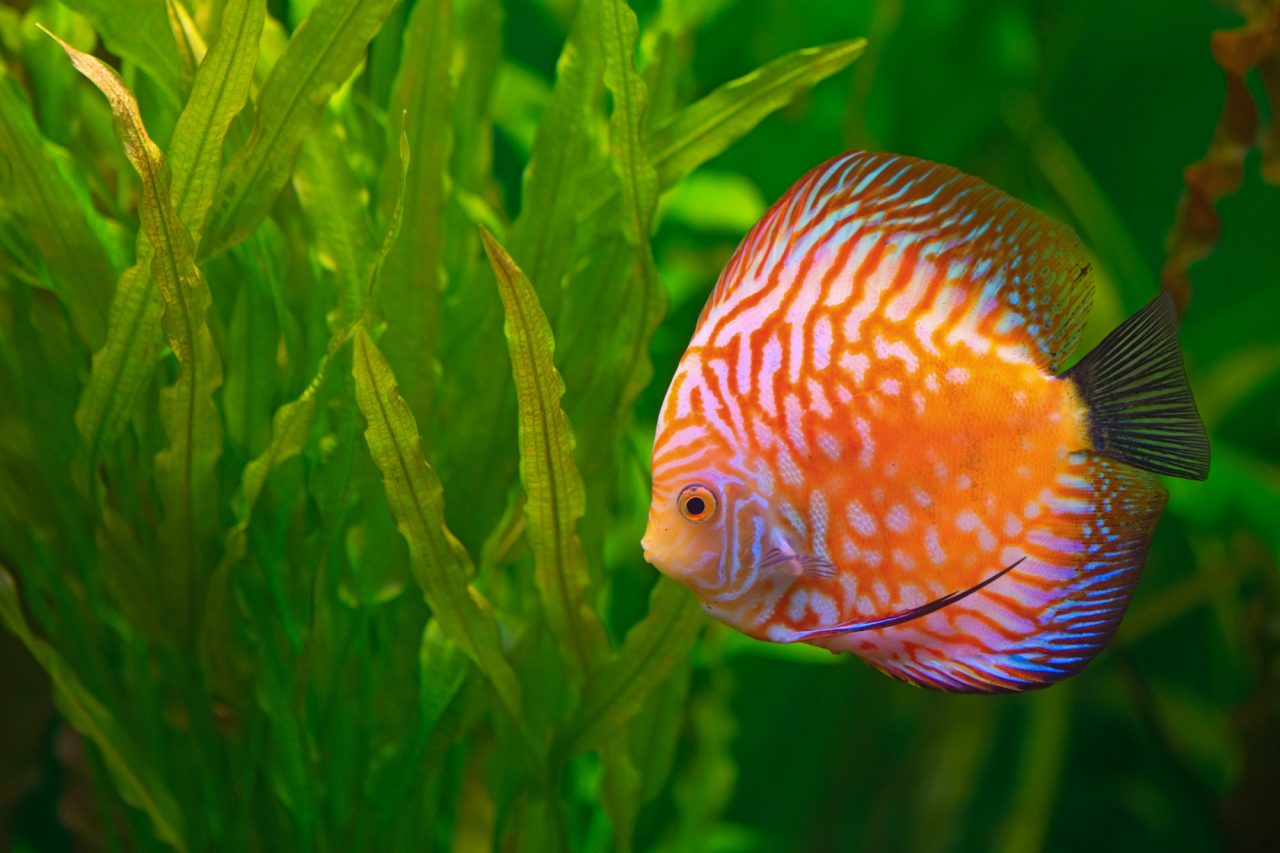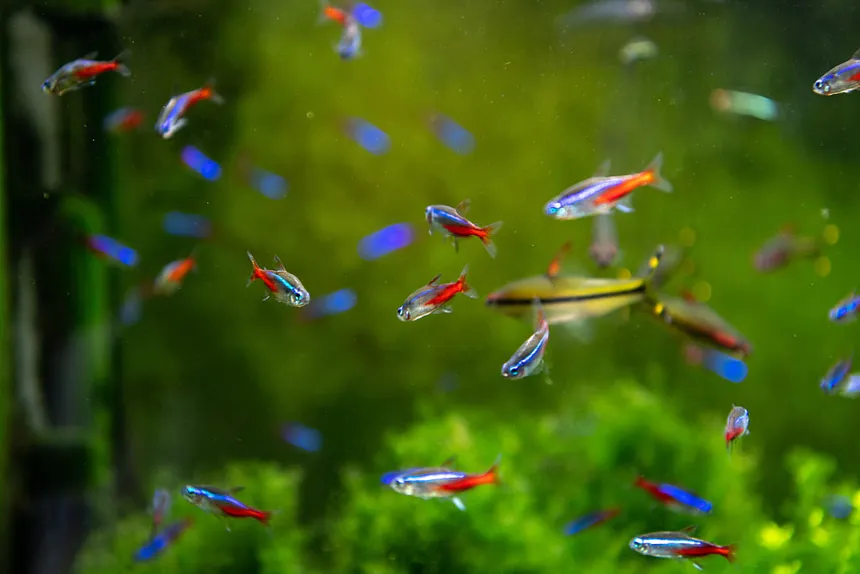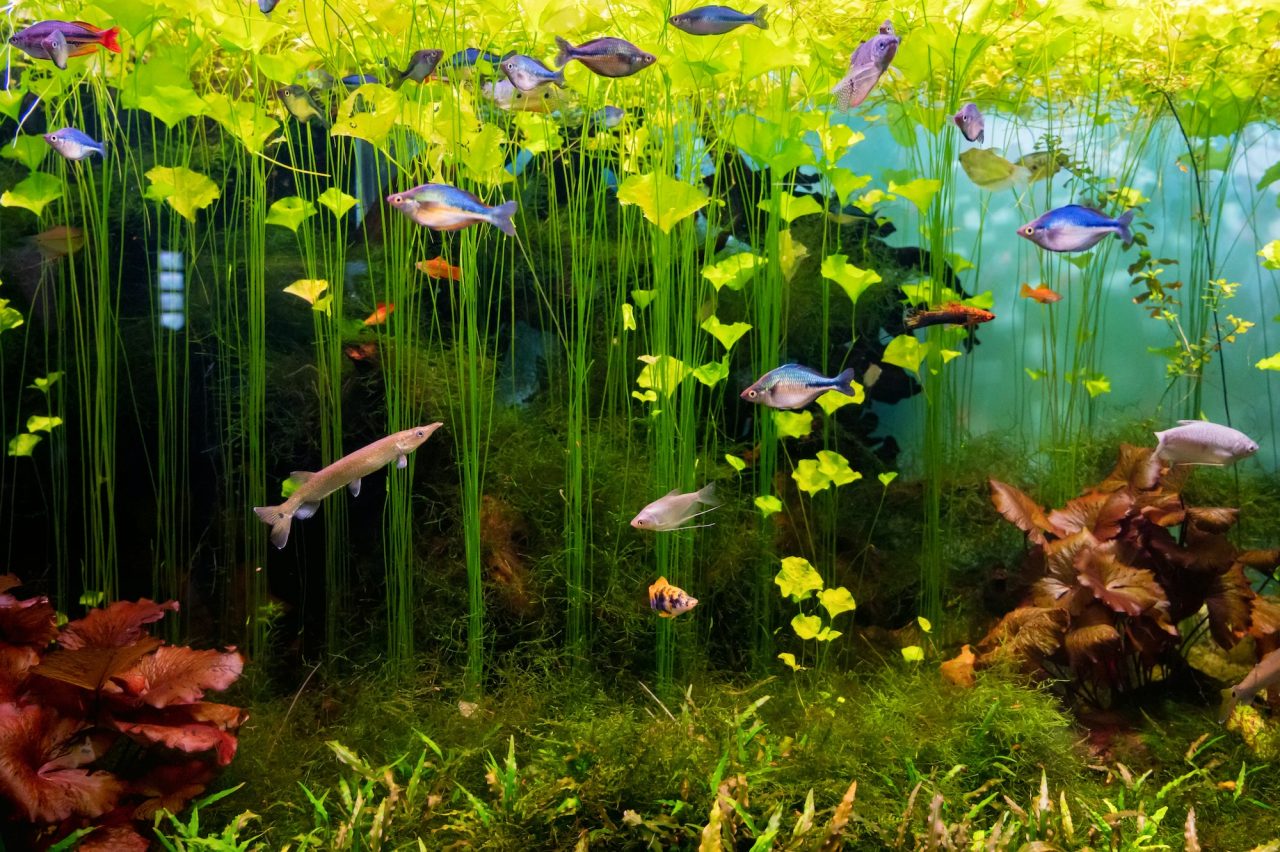To successfully overwinter your plants and fish your pond should be cleaned in the fall and kept debris-free all winter long. After the first frost (usually in mid October) remove all containers and pond pumps from the water garden. Thoroughly clean all filter media and pumps. Store pumps in a bucket of water for the winter, preferably in an area above freezing.
Prune all the foliage off the HARDY pond plants (arrowhead, cattails, floating hearts, water lilies, etc.) leaving none to drop to the bottom and foul the water during winter. Very short, small leaves are produced near the crown of the hardy water lilies at this time. DO NOT PRUNE THIS FOLIAGE! If your pond is 18″ or deeper you may submerse your plants to the bottom of the pond. If your pond is not deep enough and you need to store the hardy plants indoors, place the container in a bucket of water in a cool corner (40° to 55°) out of bright light. Be sure to check the moisture level periodically.
If you care to try overwintering your marginal plants they need to be taken indoors before the first frost. The umbrella palm, dwarf papyrus and taro plants (just to name a few) can be used as houseplants if kept wet and given enough light. Tropical water lilies may also be overwintered indoors, however, don’t take them out of the pond until all their leaves are dead. They can then be unpotted and put into a bucket of damp sand and stored in a cool, dark location.
With all the plant material out of the pond, pump pond water into clean containers to hold your fish. Keep pumping remaining pond water on nearby landscaping plants if practical. When the water is a few inches above the fish, net the fish and place them into the containers filled with pond water. Cover the container with cloth to prevent the fish from jumping out. The remaining muck can be scooped out or sucked out with a shop vac. Scrub the pond liner surface with a firm brush and clean water. Rinse the pond and drain.
Return the hardy plants to the deepest portion of the pond. Begin to refill the pond, then treat with a dechlorinator and salt, if needed. Add new, treated pond water to fish holding tank until the water temperature is within 3° of the pond water. Release your fish and scavengers into the pond. Remember to stop feeding the fish once the water temperature has dropped below 50°F. Unless your pond is covered with a net, keep an eye out for any leaves blowing into the water. They should be promptly removed.
As the temperature drops, ice is the cold weather culprit to be on the lookout for. It forms over the pond surface cutting off fresh oxygen supplies to the fish. The solution is to use a de-icer with a thermostat that is activated only when temperatures reach a few degrees above freezing. Be sure to check the pond in case of an electrical glitch. All pond supplies and fish are now on sale!





